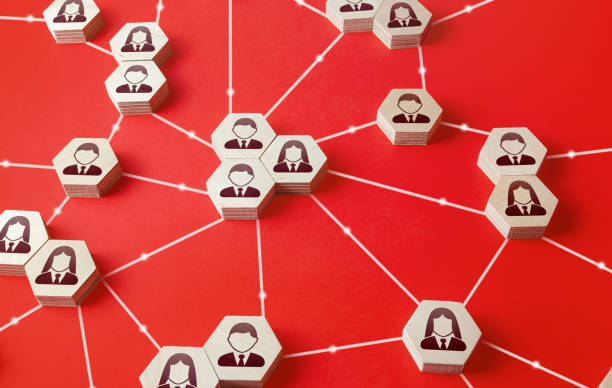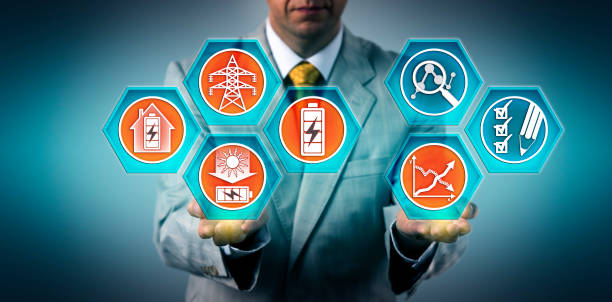Decentralized autonomous organizations (DAOs) launched as a simple concept imagined as organizations and institutions, developed by an idea and underpinned by developers. They automate business functions and processes by leveraging smart contracts together with all the integral tenets of blockchain.
DAOs are a defining component for everything that features the new decentralized internet (Web3) and the emerging crypto-economic network. The primary idea was to flatten the complex business process that different organizations are mired in and support the movement of assets to a highly future-oriented digital interaction that required no third parties and intermediaries. Thus, DAOs promised cheaper, faster, and more transparent transaction processing.
By replacing most intermediaries, the DAOs themselves worked as digital intermediaries that offer scale and transparency, offering them the identity of an organization without the traditional organizational developments of management, groups, entities, charters, and many other types of collective action.
While the traditional centralized organizational ecosystem is being challenged, the basic organizational elements that remain are pushing for a new economic revolution that is resulting in a new creator economy.
Related: New Interest in DAOs Prompts Old Question: Are They Legal?
Notably, the revolution seems to bring lawyers, artists, developers, and creators together from all around the world to develop different ideas. They can then monetize all these ideas at a global scale in permissionless cryptocurrency economic systems that are powered by Web3 and blockchain technologies – principally defining the future of work.
Minimized dependence on trusted parties, asset tokenization, and new stores of value underpinned by blockchain technology can effectively enable new forms of organizational structures and mitigate the power owned by intermediaries currently. In that context, Ronald Coase’s famous essay, “The Nature of the Firm,” focusing on the raison d’être of the firm, explored why companies exist and what components make them up.
Based on a transaction cost point of view, the company forms an economic ecosystem where the transaction cost within its jurisdiction is reduced by more control of standardized contracts with its staff and ownership of resources.
As the cost of internalizing resources surges, contractual agreements with other companies in specialized areas arise. Transaction costs linked with contracting can be reduced significantly by the decentralized authentication and smart contracts enabled by blockchain.
While that was the original thesis behind DAOs, with efficiency, speed, and costs introducing primary objectives, DAOs now represent a huge segment of the mindshare governing and the major driving force behind value extraction from the layer one blockchain platforms.
The layer-1 blockchain platforms represent the nascent Web3 technologies that strive to offer more control to the users by mainly decentralizing computation, storage, and interconnection. Most DAOs will emerge representing a collaboration of digital natives, a global talent pool, and the creativity of a community that shares a common belief system – and then bring the term “organization” to life.
DAOs Are Pillars Of The Creator Economy
A wider definition of DAOs would be organizations that record their membership, rules, and responsibilities on an immutable ledger enabled by blockchain technology. Their evolution and charter are public and unchangeable. In general, joining needs resources and community membership of some form, in tokens, to participate or vote as a participant.
Tokens are denominated in monetary assets, fungible or nonfungible tokens, whether fiat or crypto. Acquisition of tokens, mostly, needs a buy-in using crypto and fiat or time and talent participation.
DAOs offer a unique network that normally supports a developer economy, where an economic model supports an infrastructure through which you enjoy flexibility and earnings, rent your talent and time, and leverage it. Leveraging facilitates fractional ownership in the ecosystem governed and supported by the community.
Blockchain and DAOs represent a natural governance network for borderless online participation and collaboration on crypto-native projects by digital natives. This embodiment can incidentally be leveraged by traditional organizations that hold the principles, similarly to brick-and-mortar firms found in on-ramp to digital equivalents in the Web 2.0 era.
While issues surrounding regulatory clarity and infrastructure for the protection of investors persist, the digital entities represent a digital reality like that of a country – the state tries to attract capital, talent, and innovation.
Though the rules of engagement and governance measures may not be perfect, they are a continuous experiment with innovation striving to change the way people live and are set to empower each willing community’s participation.
While arguments for collectivization and autonomy get employed to defend the lack of regulation, the ability to buy voting power and the lack of protection offer a strong counter to the arrangement. In case DAOs become the digital analogs to the existing organizational and corporate structures, will they keep serving as avenues to or promoters for a creator economy and help support Web3 principles?
The Future Of Work
Web3 as a technology paradigm strives to offer viable rails for creation, tokenization, and also the movement of value and assets. The Web3 networks are designed to resolve content ownership and offer portability of digital assets by primarily tokenizing them. That strategy paves the way to trade the tokenized value for other fungible tokenized assets, hence enabling creators to monetize their work effort.
The work efforts might feature but are not limited to, mining and content creation, which includes music, art, and other types of nonfungible tokens (NFTs) that represent some form of stake in an ecosystem, like game tokens.
In a future where dynamic and borderless organizations that have no hierarchy are expected to undertake a lot of value creation, services supply is highly conceivable with interconnected value networks, bridges, and exchanges that offer connectivity between these ecosystems.
The decentralized exchanges (DEXs) and asset bridges offer an avenue to exchange different asset classes and facilitate the global movement of assets. Hence, they create global economies that attract a talent pool and digital natives.
All innovation underpinned by decentralized and transparent token economic models strives to offer a great end-user and employee experience. In the same context, it guarantees that the organization reaps the cost savings and various competitive benefits of superior participant experiences.
DAOs that are involved with NFTs, decentralized finance, and many other metaverse projects deliver as expected, where several developers and founders come up with initiatives and pursue decentralized development through platform projects. They may also crowdsource development with various token incentives and participants that are not just consumers, but also earn significantly from their notable participation.
DAOs represent an emerging trend that is pushing a deep and long-lasting transformation of the workplace that integrates digital, cultural, and philosophical belief systems. This strategy is attracting investment from the other token projects and talent from digital natives from across the world, hence creating an experience for every participant resulting in a highly resilient and empowered workforce and increased community participation.
Current And Emerging Trends
Why are DAOs making a splash even among mainstream media? Part of that reason is the growing popularity of NFTs that are expected to play a more integral role in DAO governance and who gets to participate in it.
In September 2021, Andreessen Horowitz invested around $5 million into “Friends with Benefits,” a Discord chat. The chat featured different crypto enthusiasts, NFT collectors, and artists. The group raised $10 million when it decided to operate as a DAO, showing the value to be created from the massive online communities that have formed – even with no economic incentives – on various platforms like Telegram and Facebook.
In November, it got interesting when “ConstitutionDAO” raised over $40 million to bid on the rights to buy an official copy of the United States constitution document in a Sotheby’s auction. It was the first time that the NFT marketplace had worked with a DAO, which gathered support from more than 17,000 donors in advance of that auction.
Although ConstitutionDAO was eventually outbid by Citadel CEO, Ken Griffin, this experiment was a major success in that it showed its intended use and concept.
Another emerging trend is investment DAOs, as some think that DAOs are designed to disrupt the traditional venture capital (VC) model of funding in general. Such DAOs are letting groups of Web3 natives pool funds and deploy the capital in a manner that now lets people compete with the traditional finance entities.
Hence, it is understandable that with the wide range of applications out there, DAOs are creating massive excitement and may prove to be as huge as NFTs have been in 2021. Nonetheless, challenges are expected to come up along the way.
The Path To DAO Adoption Still Rough
First, education is still a major gap in the DAOs field. Even within the crypto space, the DAO concept is still in its early stages but gaining traction. But, implementation is still far from advanced. There are few “user interfaces” for DAO governance, though an increasing number of tools are coming online to support organizations and overcome the challenges existing in the traditional organizational structures.
Regulation is another challenge that DAOs will have to contend with as they move into the mainstream. Laws created around incorporation and tax structuring are quite ambiguous and mostly outdated. That leaves DAOs in a state where they have to make their interpretation to fill in the gaps.
Notably, decentralization is a spectrum and not binary. Though the DAO governance tokens let users participate in decentralized governance, a majority of the projects still operate with a degree of centralization.
Related: DAO Creation: A Basic How To
In the end, decentralized governance is quite complex, mainly at scale. It is a major challenge with many obstacles that have affected blockchain developers since its inception. How do you manage to keep voters engaged after the community becomes big enough, and votes have to be conducted with increased frequency?
How do you prevent wealthy whales from buying excessive power by scooping up most of the tokens available in the market? To what extent should code be the law, and shouldn’t there be fail-safes in place to resolve cases where a malicious entity penetrates the system and wrestles to acquire majority control? If that is the case, who controls these fail-safes?
There are no direct or easy answers to these questions. But since crypto, NFTs, and decentralized finance have found a strong foothold to reach the mainstream realm, it seems natural that DAOs follow suit. Moreover, as they grow further to become more mainstream, it is expected to become easier to identify smoother ways by which communities can decentralize governance.











